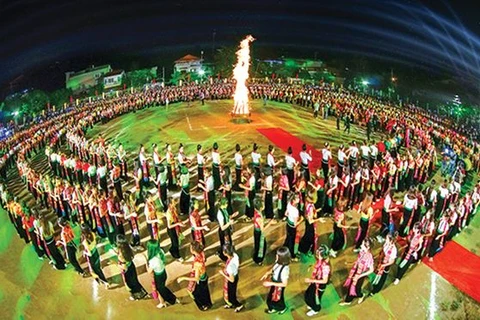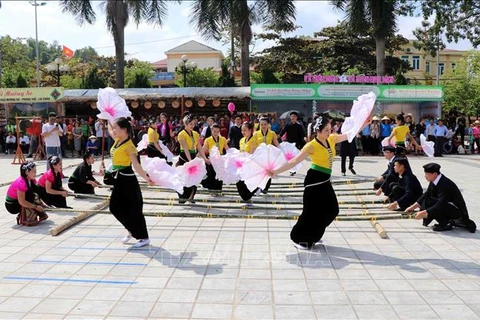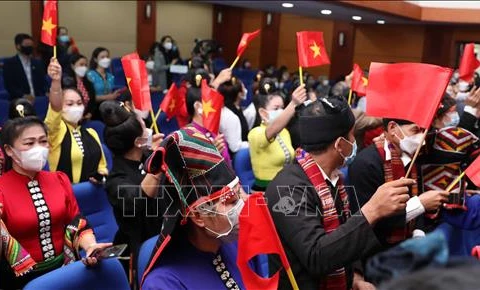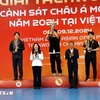Hanoi (VNA) – The art of Xoe dance of Thai ethnic people meets all of the five criteria set by UNESCO to be listed as an Intangible Cultural Heritage of Humanity, according to the UNESCO Intergovernmental Committee for the Safeguarding of the Intangible Cultural Heritage.
The art was officially recognised by the UNESCO as an Intangible Cultural Heritage of Humanity on December 15 during the 16th session of the Intergovernmental Committee.
Xoe is a unique type of traditional dance that is associated with and plays a significant role in the daily life of Thai ethnic communities in the northwest of Vietnam, especially in the provinces of Lai Chau, Dien Bien, Son La and Yen Bai. It is performed in various community activities from festivals to funeral rituals.
There are about 30 Xoe dances, which have been developed, protected and handed down through generations intact over hundreds of years, including xoe quat (xoe dance with a fan), xoe khan (xoe dance with a scarf), xoe non (xoe dance with a conical hat) and many others with contents reflecting community activities and expressing the Thai people’s emotion. With gentle and alluring rhythms, dancers usually form a circle around a festive flame and move to the sound of melodic traditional music.
Xoe dance has become a symbol of hospitality of Thai people and an important cultural imprint of the community in the northwestern mountainous region.
The recognition of the art as an Intangible Cultural Heritage of Humanity affirms Vietnam’s diverse cultural identities as well as the close bonds of the community and the country’s respect for cultural diversity.
Moreover, the title is expected to help raise the world’s awareness of the Intangible Cultural Heritages in general and the art of Xoe dance of Vietnam in particular./.
Xoe is a unique type of traditional dance that is associated with and plays a significant role in the daily life of Thai ethnic communities in the northwest of Vietnam, especially in the provinces of Lai Chau, Dien Bien, Son La and Yen Bai. It is performed in various community activities from festivals to funeral rituals.
There are about 30 Xoe dances, which have been developed, protected and handed down through generations intact over hundreds of years, including xoe quat (xoe dance with a fan), xoe khan (xoe dance with a scarf), xoe non (xoe dance with a conical hat) and many others with contents reflecting community activities and expressing the Thai people’s emotion. With gentle and alluring rhythms, dancers usually form a circle around a festive flame and move to the sound of melodic traditional music.
Xoe dance has become a symbol of hospitality of Thai people and an important cultural imprint of the community in the northwestern mountainous region.
The recognition of the art as an Intangible Cultural Heritage of Humanity affirms Vietnam’s diverse cultural identities as well as the close bonds of the community and the country’s respect for cultural diversity.
Moreover, the title is expected to help raise the world’s awareness of the Intangible Cultural Heritages in general and the art of Xoe dance of Vietnam in particular./.
VNA

























